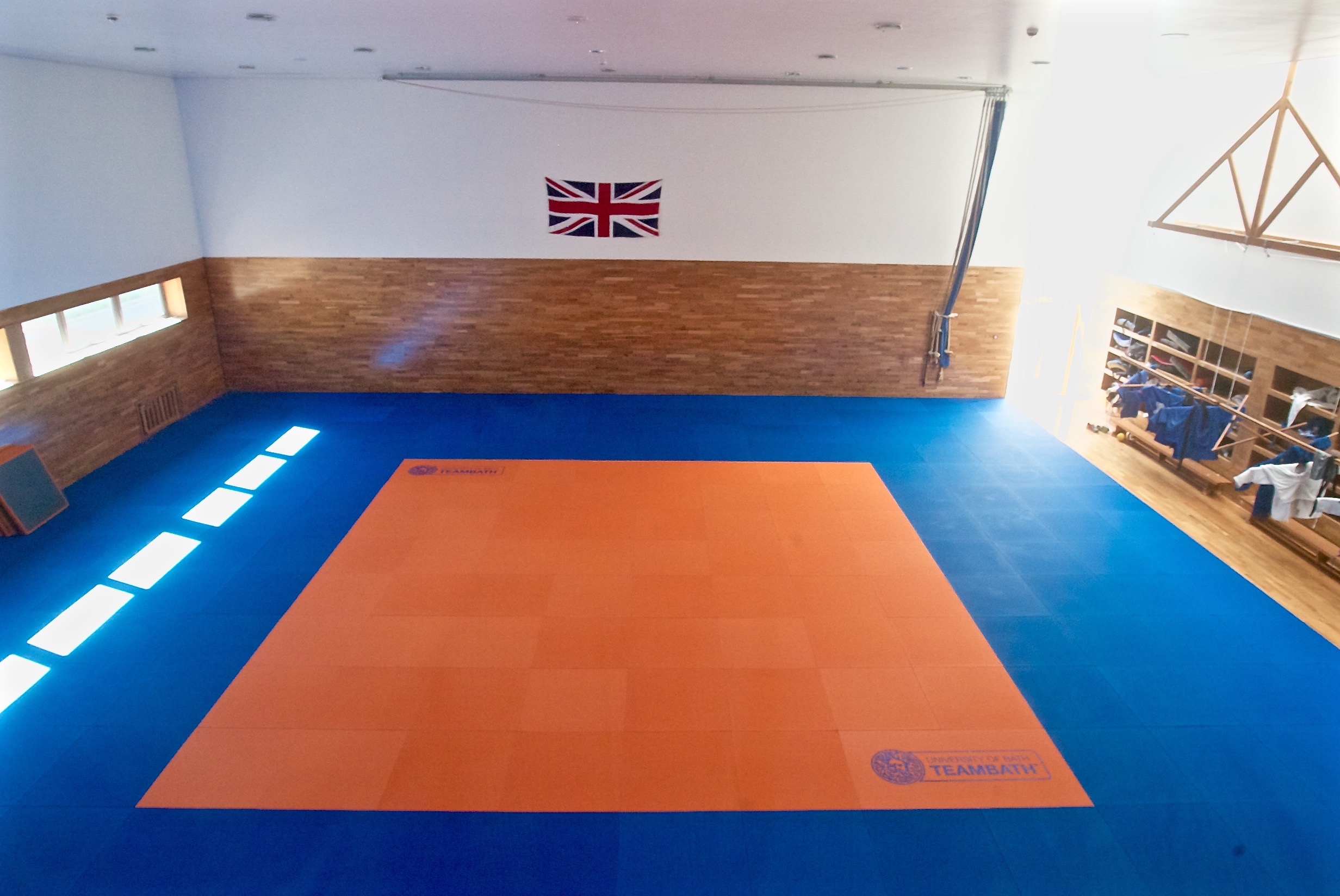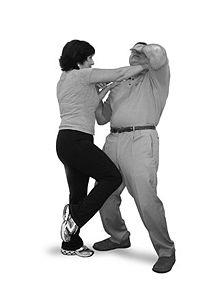
Self defense techniques are something you can learn if you're interested. You have many options for self-defense, from videos to books. These videos will show you how to correctly apply chokes and strikes. There are many physical techniques that can be used to strike, evade, or balance an opponent. You will also learn about ground survival and weapon protection. To escape a situation, you must know how to use chokes.
Basic self-defense techniques
Practicing basic self-defense moves can help you get the confidence you need to fight back. You can practice these moves at your home even if are not a karate blackbelt to boost your confidence. You can also use your body language to set boundaries and send physical strikes if you feel threatened. It's always better to be safe than sorry. When you do feel the need to use these moves, you'll be happy you did.
Elbow strike
The elbow is an incredible weapon in self defense. Its thick, rounded shape is perfectly conditioned for striking and is stronger than the bones of the hand. The elbow can be used to create a brick wall. We'll show you how to use your elbow to stop an attacker. Keep in mind, the striker must be standing. It would be easy to lose balance and fall in the path of an attacker.

Hammerfist Punch
Hammerfist Punch: This short-range combative technique uses the primate body as a weapon to drive the fist forward and out like the hammer. The body's weight and core are the driving forces for the hammer punch. Hammerfist punches can be delivered horizontally or vertically, depending on how they are done. It involves three distinct steps:
Knee kick
It is best to raise your leg to protect yourself from a knee-kick. This will block the incoming kick and render the enemy's attack ineffective. This defense technique requires that you keep your hips away and your hip flexors activated. An opponent's instinctive reaction to a leg kick is to cover their face. Therefore, your knee strike should be used to force them up, showing his solar plexus.
Choke hold
The purpose of a choke hold is to force the opponent unconscious. This involves pushing their head, neck and hips towards the opponent. Because it forces the opponent's head, neck and hips towards you, this position is beneficial. You can also use the technique on your feet. This will allow you to trip your opponent's lower back. Learn to apply the choke hold and save your life. Listed below are some effective self-defense techniques for choke holds.

FAQ
Which workout is the most effective for men
It all depends on your goals. Cardio workouts can help you lose weight faster than strength training.
However, strength training can be beneficial if you only want to build muscle mass. It increases lean mass.
Both types of exercise have proven benefits if you want to improve your overall health.
If you're looking for a quick way to get fit, I recommend HIIT/sprint interval training. This type helps you burn fat quickly, by increasing your metabolism. It increases your endurance so you can continue training even when tired.
What is a good schedule for a 7-day work out?
A seven day exercise program should include cardiovascular training (running or biking), strength exercises (using freeweights, weight machines) and one flexibility/core workout. Each activity should be done at least once per week. Each session should not last more than 45 minutes.
Cardiovascular Exercise: Running/Biking/Swimming
Aim to do at least 60 minutes per week of cardio. Try to do 75 minutes per semaine for the best results. Cardio exercise can improve blood flow and stimulate muscle development.
Strength Training
Cardio exercises target the heart, lungs and muscles. Strength training targets the muscles, tendons and bones. Strength training increases lean muscle mass and helps to burn calories even at rest.
Flexibility & Core Workouts
To strengthen your whole body, flexibility and core work outs are excellent ways to do so. Both yoga and Pilates can be great choices.
Are you a cardio-exercise fan?
Cardiovascular exercise offers many benefits. Cardiovascular exercise improves blood circulation and strengthens your heart muscle. It also increases stamina and helps you lose weight.
Cardiovascular exercise includes running, biking, hiking, swimming, tennis, basketball, soccer, volleyball, football, etc.
It is important to keep in mind that cardio exercises should not only be performed at a high level of intensity, but also at low levels. This could result in injury.
The cardiovascular exercise should only be performed if you feel good.
You should never push yourself beyond your limits. You could injure yourself if you do.
Warm up is the best way to start cardiovascular exercise. Then, gradually build up to higher intensity levels.
Remember, you should always listen to your body. If you feel pain while performing cardiovascular exercise, it is important to stop immediately.
After a cardiovascular training session, it is recommended that you take some time to relax. This allows your muscles time to recover.
Cardiovascular exercise is a great way to lose weight.
This is the best way to lose weight and belly fat.
Do I have the obligation to exercise every day or just on occasion?
No! At least 30 minutes moderate-intensity exercise five days per week is a good goal. It means you need to exercise hard enough or walk fast enough that you are slightly out-of- breath.
Are There Any Benefits Of Doing Yoga?
Yoga has been around for thousands of years and is now very popular. Yoga is very popular with celebrities as well as ordinary people who wish to be fit and healthy.
Yoga is great for strengthening and stretching your muscles. Yoga is also great for calmening your mind and relaxing.
Yoga and other forms exercise differ in that yoga is focused on breathing techniques.
You can practice various poses to improve your flexibility and balance.
Which order is best for working out?
It depends on what you are looking for. Start with heavy lifting if you're looking to build muscle mass. Then you can move to cardio. Next, if you're looking to lose weight then switch to strength training.
You can burn fat by just doing cardio. Next, add strength training.
Cardio is the best way to build muscle mass.
Also, eat before you workout. This will fuel your muscles and make them work harder. It will also make you feel more energetic during your workouts.
How can I lose weight by avoiding certain foods?
Trans fats should be avoided. Trans fats raise LDL (the bad) cholesterol levels and reduce HDL (the good) cholesterol levels.
Trans fats can also be found in deep-fried food, fast food, packaged bakery goods, snack cakes, as well as other processed foods.
These unhealthy fats can also lead to inflammation, which can cause heart disease and diabetes.
Avoid foods containing artificial sweeteners. Artificial sweeteners are linked to an increased risk of cancer.
These chemicals can be found in soft drinks, chewing gum, and candy bars. They also appear in meat, poultry and eggs.
Artificial sweeteners are saccharin (cyclamate), sorbitol and aspartame.
These chemicals can damage DNA and cause cell death, according to the American Heart Association.
Statistics
- According to the American Academy of Dermatology (AAD), men over 50 are at a heightened risk of developing it. (healthline.com)
- Candidates and applicants must pass all four tests at 70% (minimum level) to graduate from Basic Deputy U.S. Marshal (BDUSM) Training. (usmarshals.gov)
- An estimated calorie range for moderately active adult males falls between 2,200 to 2,800 calories per day, depending on age. (eatright.org)
- Are You One of the 20% of Guys (mh.co.za)
- The PRS enabled risk stratification for overall prostate cancer and lethal disease with a four-fold difference between men in the highest and lowest quartiles (HR, 4.32; 95% confidence interval [CI], 3.16-5.89). (pubmed.ncbi.nlm.nih.gov)
External Links
How To
What's the best food for men?
Men should consume five portions of fruits and veggies per day. They must also avoid red meat and fast food.
Antioxidants are found in fruits and vegetables, which protect against cardiovascular disease and other diseases.
Vegetables include broccoli, cauliflower, carrots, spinach, tomatoes, peppers, cucumbers, lettuce, mushrooms, etc.
Peas and beans are also high in protein and fiber.
A great source of omega-3 fatty acid is nuts and seeds. Omega-3 fatty acid is essential for the brain and hormone production.
Fish is another great source of omega-3s. Mercury is more abundant in fish than in most other meats. However, fish liver oil does contain fewer toxins.
Normal growth and development are possible with the help of Omega-6s in vegetable oils like soybean, safflowers, sunflowerseed, cottonseed, and corn oils.
Poultry is a great source of lean proteins. Chicken breast is one of the healthiest meats.
Lean beef is low on saturated fats, cholesterol, and other harmful substances. You should limit your intake of red meat as it can increase your risk for prostate cancer.
Avoid processed meats such as sausage and hot dogs. These have added nitrates which can be carcinogenic.
Exercise is essential to maintaining good health. Even if you exercise regularly, what do you do? What can you do to improve or maintain your physical condition?
The answer is yes You can do several things to make sure you get the most out of your workouts. Here are some tips for maximising your workout.
Start slowly. You may hurt yourself if you push yourself too hard in your first session. You can start slowly increasing your intensity by starting at a comfortable pace.
Before and after. Stretching can help to loosen tight muscles, decrease soreness, improve flexibility, and reduce pain. You can stretch by lying down, standing up, or walking around.
Cool down. This is especially important when you do cardio exercises. Your body needs time to recover between sessions, so it doesn't become tiring. For cooling down, you can walk slowly, take deep breathes, or go for short swim.
Hydrate. Drinking plenty of fluids helps keep you hydrated and reduces muscle cramps. Water is the ideal beverage, but sports drinks may also be helpful.
Be healthy. Make sure you are getting enough calories each day. Regular meals throughout the day can help you stay focused and energized during your workouts.
Get some rest. Get enough rest to feel refreshed and ready to tackle your next training session. Sleep is also crucial for repairing damaged tissues.